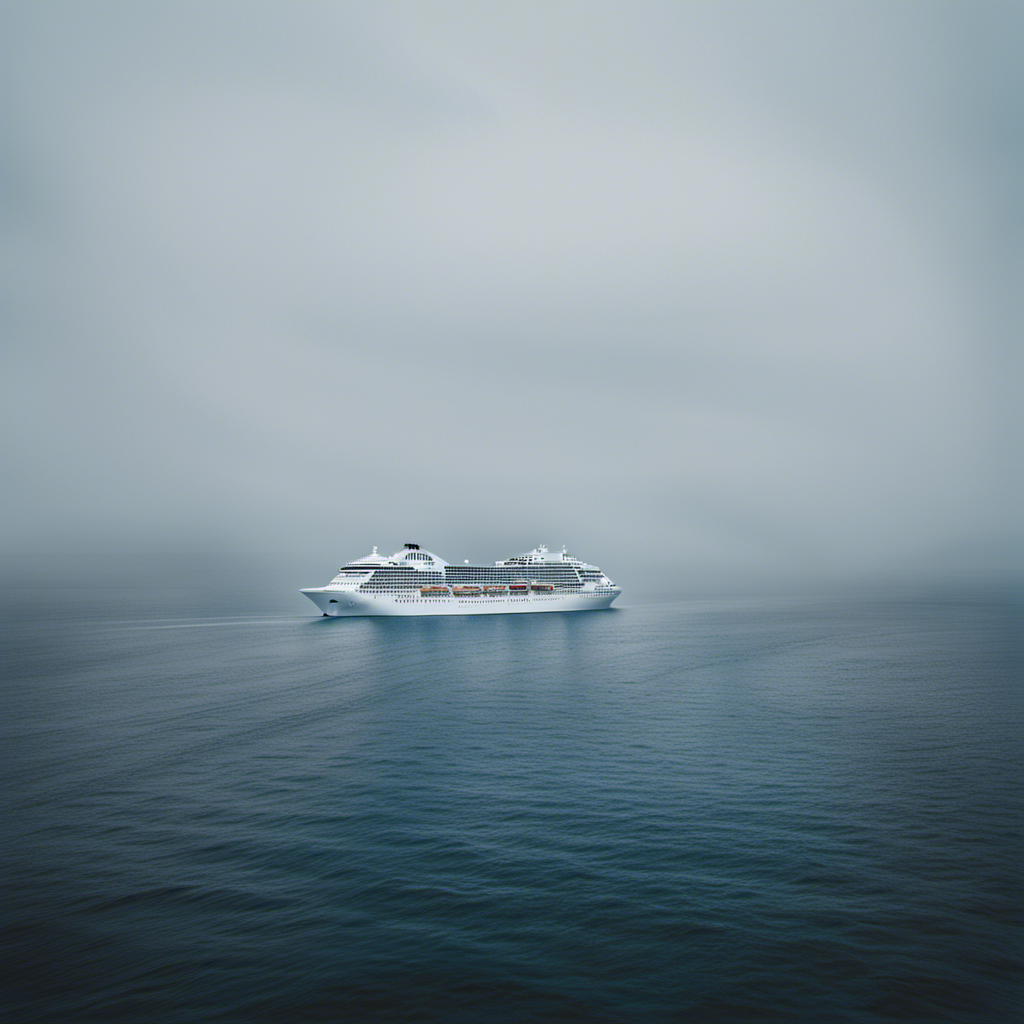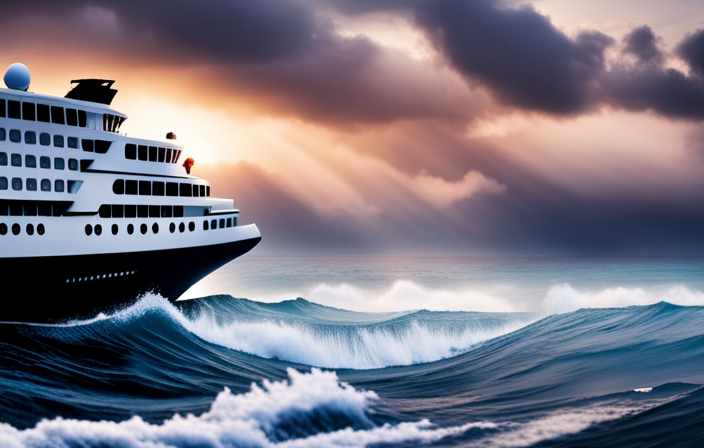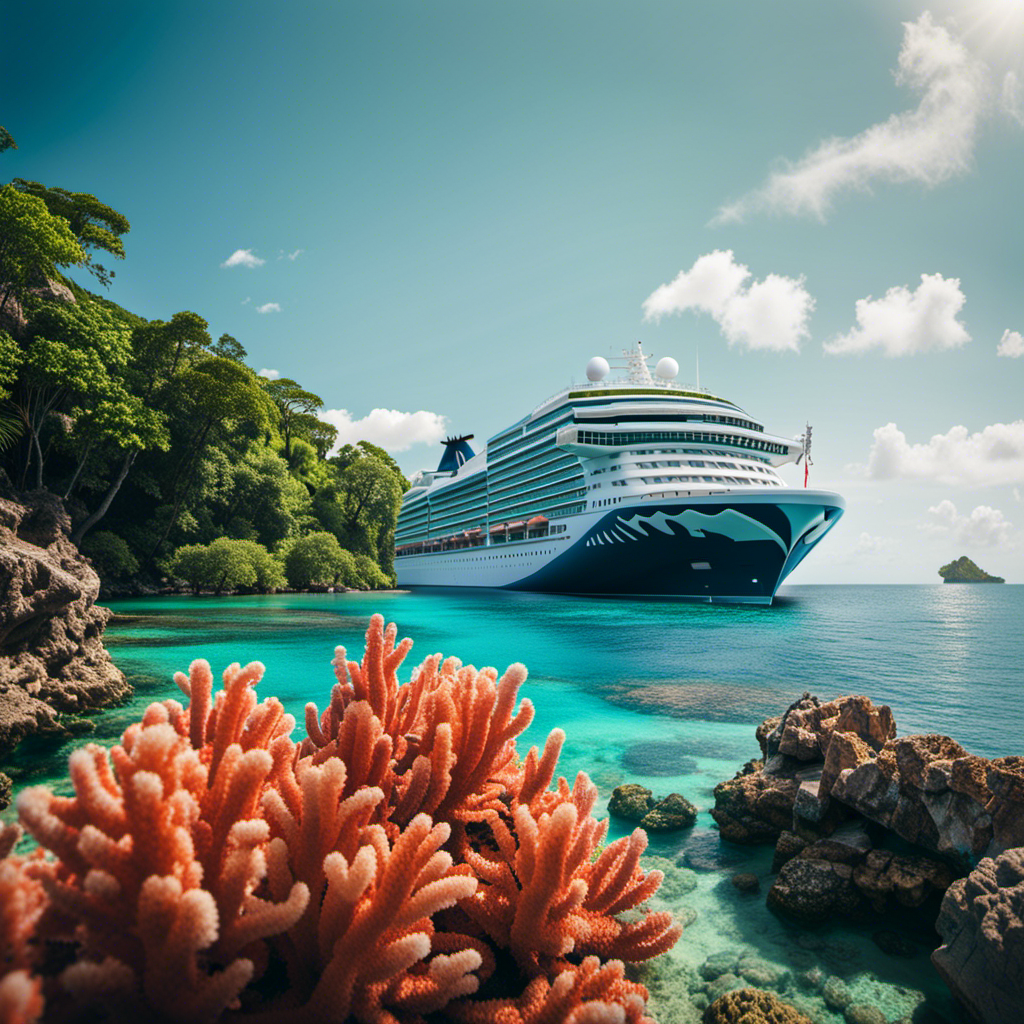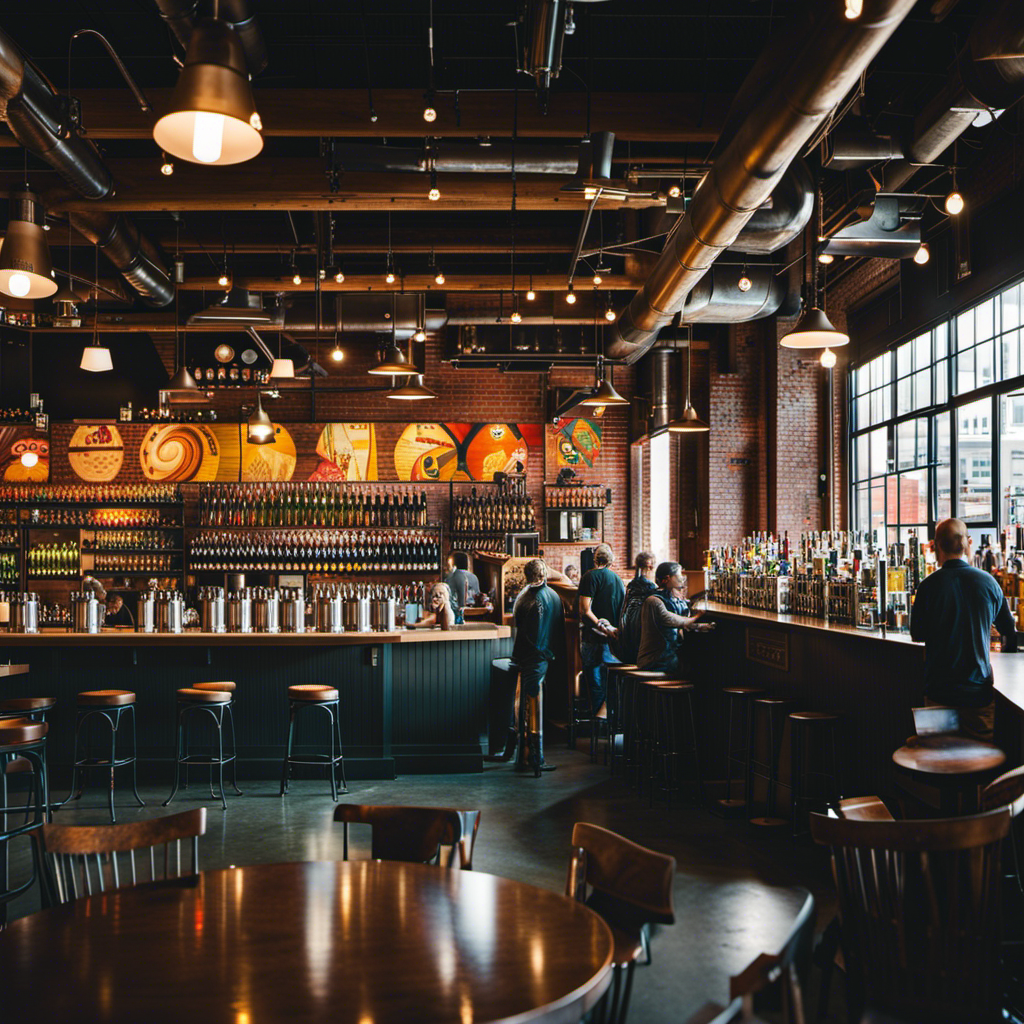As an enthusiast with a deep interest in the cruise industry, I am closely monitoring the potential departure of Norwegian Cruise Line (NCL) from Florida. This development could be a critical juncture for the industry, as NCL’s CEO, Frank Del Rio, contemplates relocating departures due to Florida’s prohibition on requiring proof of vaccination.
While Florida’s leadership has been advocating for the return of the cruise industry, this conflicting state law may push NCL and other cruise lines to seek alternative ports. The outcome of this situation has implications for the entire industry and could set a precedent for navigating vaccination requirements.
Key Takeaways
- Norwegian Cruise Line is considering leaving Florida due to the state’s law prohibiting businesses from requiring proof of vaccination.
- Florida’s leadership has been supportive of the cruise industry and has fought for its return, even suing to allow trips to resume.
- The unlikelihood of Norwegian Cruise Line leaving Florida is due to the state’s major ports, economic impact, and political consequences.
- Other ports like New Orleans and Galveston are closely watching the situation, but it is unlikely that ships could be moved between markets quickly.
The Significance of Norwegian Cruise Line’s Potential Departure
The potential departure of Norwegian Cruise Line from Florida is a significant turning point for the industry. The significance of this potential departure cannot be understated, as Norwegian Cruise Line is one of the major players in the Florida cruising market. If they were to leave, it would have far-reaching implications for the industry as a whole.
The issue at hand is the requirement for proof of vaccination, which Florida prohibits. Norwegian Cruise Line, on the other hand, wants passengers and crew to be fully vaccinated. This conflict highlights the challenges that the industry is facing in navigating vaccination requirements.
The outcome of this situation could set a precedent for other cruise lines, and the industry is closely monitoring the resolution of the issue.
Florida’s Role in the Cruise Industry’s Turning Point
As a Floridian, I understand the significance of Florida’s role in the cruise industry’s current situation. The state’s support for the cruise industry is crucial for its success. Florida’s leadership has been fighting to bring back cruising, recognizing the importance of this sector for the state’s economy.
However, Norwegian Cruise Line’s potential departure from Florida could have significant implications. Being one of the major players in Florida cruising, their departure would be a major blow. Florida ports are the biggest and busiest in the United States, and cruise companies have major operations and terminals here.
Losing Norwegian Cruise Line would not only result in billions in economic activity and jobs lost for Floridians but also be politically disastrous. Both parties have incentives to reach a compromise, and the industry is closely monitoring the resolution of this issue.
Political and Economic Implications of Norwegian Cruise Line’s Departure
Being a Floridian, I can see the significant political and economic implications if Norwegian Cruise Line were to leave.
Politically, it would be disastrous for Florida, as the state has been fighting to bring back the cruise industry. Governor Ron DeSantis has criticized the CDC’s rules and even sued to allow trips to resume. If Norwegian Cruise Line leaves, it would send a message that cruises can return to the US, but not from Florida. This would be a blow to the state’s reputation and influence in the industry.
Economically, the impact would be massive. Florida ports are the biggest and busiest in the United States, and cruise companies have major operations and terminals in the state. Sailing from Florida means billions in economic activity and jobs for Floridians. Losing Norwegian Cruise Line would be a significant loss for the state’s economy.
Potential Benefits for Other Ports If Norwegian Cruise Line Leaves
If Norwegian Cruise Line were to leave Florida, other ports like New Orleans and Galveston would closely watch the situation for potential benefits. The potential economic impact of Norwegian Cruise Line’s departure would be significant, as it would mean billions of dollars in economic activity and jobs for the chosen port.
However, rebooking logistics could pose a challenge for the cruise line. Moving ships to new markets would require canceling current bookings and rebooking, which could lead to customer dissatisfaction and financial losses. Additionally, it is unlikely that ships could be moved between markets quickly, further complicating the situation.
Despite these challenges, ports like New Orleans and Galveston are hopeful for the opportunity to attract Norwegian Cruise Line and capitalize on the potential benefits it could bring.
Navigating Vaccination Requirements: Challenges for the Cruise Industry
I’m closely monitoring the challenges faced by the cruise industry as it navigates vaccination requirements.
The cruise industry is currently grappling with the issue of vaccination requirements for passengers and crew. While many cruise lines, including Norwegian Cruise Line, want everyone on board to be fully vaccinated, there are challenges due to varying regulations and laws in different jurisdictions.
In Florida, for example, businesses are prohibited from requiring proof of vaccination. This has created a dilemma for Norwegian Cruise Line, which is considering sailing from somewhere other than Florida.
The situation is unprecedented and has brought attention to the complexities of operating cruise ships in different regions. The outcome of this issue could set a precedent for other cruise lines and has the industry closely monitoring the resolution.
Setting a Precedent: The Impact of Norwegian Cruise Line’s Departure
The resolution of this issue could have far-reaching implications for other cruise lines and the future of sailing from Florida. The potential departure of Norwegian Cruise Line from Florida would undoubtedly have a significant impact on tourism and economic consequences for the state.
Florida relies heavily on the cruise industry as a major contributor to its economy, with billions in economic activity and jobs for Floridians. If Norwegian Cruise Line were to leave, it would not only result in the loss of revenue for the state but also potentially lead to other cruise lines considering alternative ports. This could have a domino effect on the tourism industry, affecting hotels, restaurants, and other businesses that depend on cruise passengers.
The outcome of this situation will be closely watched by the industry, as it could set a precedent for how cruise lines navigate vaccination requirements and where they choose to operate in the future.
The Resolution of the Issue: A Turning Point for the Industry
The potential departure of Norwegian Cruise Line from Florida has brought the industry to a turning point. As the resolution of this issue unfolds, it will have a significant impact on the tourism industry as a whole.
The role of CDC guidelines in the resolution is crucial. While the CDC offers incentives for vaccinated cruises, Florida’s law prohibits vaccine requirements. This clash between state and federal regulations has created a complex situation for the cruise industry to navigate.
The outcome of this issue will not only set a precedent for other cruise lines but also shed light on the challenges faced in operating cruise ships in different jurisdictions. As the industry closely monitors the resolution, it is clear that finding a compromise that aligns with both the CDC guidelines and Florida’s laws is essential for the future of the cruise industry.
Operating Cruise Ships in Different Jurisdictions: Complexities and Considerations
Navigating the complexities of operating cruise ships in different jurisdictions requires careful consideration and adaptation. As a cruise line, we must take into account the legal considerations of each jurisdiction we operate in. Here are five key factors that contribute to the complexities of international operations:
-
Varying vaccination requirements: Different countries may have different rules regarding the vaccination of passengers and crew. This necessitates thorough planning and coordination to ensure compliance.
-
Legal frameworks: Each jurisdiction has its own set of laws and regulations that govern the operation of cruise ships. We must familiarize ourselves with these laws and ensure compliance to avoid any legal issues.
-
Cultural differences: Operating in different countries means encountering diverse cultures and customs. It is crucial to understand and respect these differences to provide a positive experience for our passengers.
-
Language barriers: International operations may involve dealing with language barriers, which can impact communication and customer service. Employing multilingual staff and providing language assistance is vital in overcoming this challenge.
-
Logistics and infrastructure: Each jurisdiction may have different infrastructure and logistical requirements. We must adapt our operations to accommodate these differences and ensure smooth sailing for our passengers.
Taking these complexities and legal considerations into account allows us to operate successfully in different jurisdictions and provide unforgettable experiences for our guests.
The Future of the Cruise Industry: Lessons From Norwegian Cruise Line’s Potential Departure
The potential departure of Norwegian Cruise Line from Florida marks a turning point for the cruise industry. This situation highlights the future challenges that the industry will face in navigating vaccination requirements and finding a balance between the interests of cruise lines and the jurisdictions they operate in. The industry’s response to this issue will be crucial in shaping the future of cruising.
The impact of Norwegian Cruise Line’s potential departure goes beyond just one company. It sets a precedent for other cruise lines and raises questions about the viability of operating in jurisdictions with conflicting regulations. The industry is closely monitoring the resolution of this issue, as it will have significant implications for future developments.
To address these challenges, the industry will need to come up with innovative solutions and establish clear guidelines on vaccination requirements and other health and safety measures. Collaboration between cruise lines, governments, and health authorities will be essential in ensuring the safe and successful resumption of cruising.
Overall, the potential departure of Norwegian Cruise Line serves as a wake-up call for the industry, highlighting the need for adaptability and resilience in the face of future challenges.
Frequently Asked Questions
How Does Norwegian Cruise Line’s Potential Departure From Florida Impact the Cruise Industry as a Whole?
Norwegian Cruise Line’s potential departure from Florida could have a significant economic impact on the cruise industry as a whole. It would disrupt the competitive landscape and potentially set a precedent for other cruise lines.
What Role Does Florida Play in the Turning Point of the Cruise Industry?
Florida plays a significant role in the turning point of the cruise industry due to its significance in tourism. The potential departure of Norwegian Cruise Line would have a major impact on the state’s economy and the overall industry.
What Are the Political and Economic Implications if Norwegian Cruise Line Decides to Leave Florida?
The potential departure of Norwegian Cruise Line from Florida would have significant political and economic implications. It would impact the state’s economy and jobs, and potentially set a precedent for other cruise lines facing vaccination requirements.
What Potential Benefits Would Other Ports Experience if Norwegian Cruise Line Leaves Florida?
If Norwegian Cruise Line leaves Florida, other ports like New Orleans and Galveston could benefit. It would require canceling current bookings and rebooking, but the potential economic impact could be significant for these ports.
What Are the Challenges Faced by the Cruise Industry in Navigating Vaccination Requirements?
The challenges faced by the cruise industry in navigating vaccination requirements include ensuring all passengers and crew are fully vaccinated, complying with different regulations in various jurisdictions, and addressing concerns about privacy and discrimination.
Claire, a creative soul with an unquenchable thirst for storytelling, is an integral part of the Voyager Info team. As a dedicated writer, she weaves captivating narratives that transport readers to enchanting cruise destinations and beyond.
Claire’s love affair with writing began at an early age when she discovered the magic of words and their ability to craft worlds and emotions. Her innate curiosity led her to explore various literary genres, but it was travel writing that truly captured her heart. Drawing inspiration from her own globetrotting adventures and encounters with diverse cultures, Claire embarked on a journey to become a travel writer par excellence.











